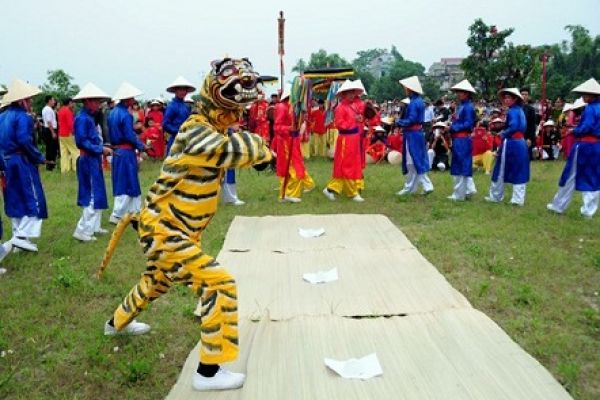
The art is practiced at the Giong Festival (from the seventh to the ninth days of the fourth lunar month) in Phu Dong Temple, Ha Noi’s Gia Lam district, by a troupe from Phuc Loi ward of Long Bien district.
Legend has it that under the reign of the sixth Hung King - the legendary founder of Van Lang (now Viet Nam), the country was attacked by northern invaders known as “An”.
Giong in Phu Dong village rode an iron horse to fight the foreign troops. After defeating the invaders, he rode the iron horse to Mount Soc in what is now Soc Son district and flew away, leaving his mother sad about his absence.
Then, the King ordered children herders, who tethered their buffaloes in Hoi Xa village to follow Giong into battle, to sing and dance to soothe her, which is how Ai Lao singing and dancing was born.
In ancient Chinese language, Ai Lao means tethering buffaloes, and the children herders were called the Ai Lao troupe, according to researcher Cao Huy Dinh.
In 2010, the Giong Festival was recognised as intangible cultural heritage of humanity by UNESCO.
Aside from Ai Lao singing and dancing, six others practises were named national intangible cultural heritage by the Ministry of Culture, Sports and Tourism.
There are 174 national intangible cultural heritage pieces in Viet Nam at present.
(84-63) 3 826042 – (84-63) 3 511142
No 54 Nguyen Dinh Chieu, Ham Tien Central Mui Ne Beach Binh Thuan Vietnam
523 To Hien Thanh District 10 Ho Chi Minh City Vietnam
Ha Long Halong City Quang Ninh Vietnam
A13 Hung Thong 2 Halong City Quang Ninh Vietnam




